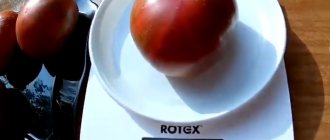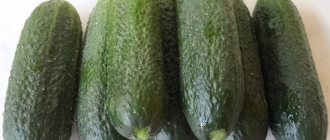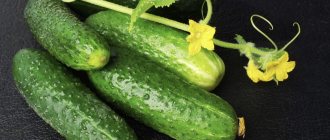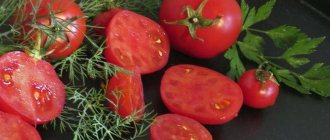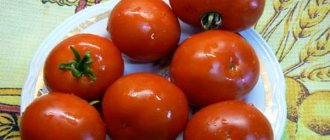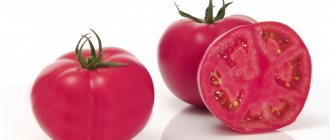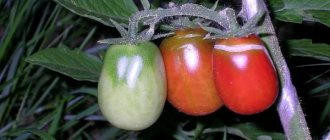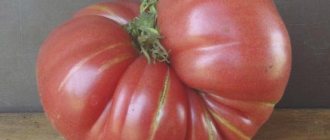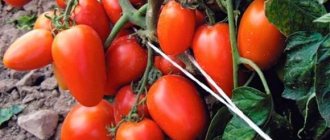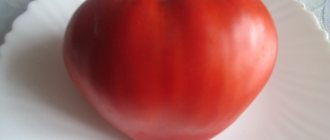Onions are considered one of the most cultivated crops in Russian gardens. The history of its cultivation goes back more than 6 thousand years. It is used in the preparation of almost every Slavic dish. Among the many subspecies, gardeners have a special love for Hercules onions. The description of the variety and the necessary agrotechnical measures are discussed in the article.
Hercules onion: description of the variety
Main characteristics
Let's look at the most significant characteristics of the variety in the table:
| Parameter | Characteristic |
| Culture | Onion (Allium cepa L.) |
| Variety/hybrid | "Hercules F1" |
| Ripening time | Very early or early (early ripening): technical ripeness reaches 70-85 days from the moment of emergence; According to some sources, the average is 90-100 days |
| Plant type | Spicy |
| Purpose | Universal |
| Growing conditions | Gardening |
| Productivity | High: 4-6 kg/m2 (up to 8 kg/m2); in industrial plantings – up to 55.7 t/ha |
| Bulb weight | 120-160 g |
| Form | Widely elliptical |
| Scale color | External (dry) yellow, golden-straw; internal (juicy) – white |
| Taste qualities | Excellent: spicy, juicy |
| Storage duration | 6-9 months |
| Year of entry into the State Register of the Russian Federation | 2006 |
| Recommended growing regions | Central (3) |
| Originator | Bejo Zaden BV (Netherlands) |
| Year of entry into the register of Belarus | 2009 |
| Recommended growing regions | All |
Advantages and disadvantages
The Hercules bow has many advantages, it is not for nothing that it is considered the standard.
- The most important thing is that onions have a very good shelf life and shelf life. Moreover, the nutritional value, taste and aroma of onion heads are not lost during storage. In this parameter, perhaps, it is unsurpassed.
- High productivity, of course, also deserves all praise.
- Good taste will please any housewife.
- The level of resistance to all kinds of diseases and pests is a very valuable quality for any gardener.
- Finally, the Hercules onion, due to the formation of a powerful root system, is quite resistant to drought, therefore, it can be grown even with irregular watering.
But the Hercules bow also has disadvantages:
- It is a hybrid, so its seeds are useless to grow and save.
- The price of planting material is quite high.
Productivity
In the south of our country, “Hercules” is cultivated as an annual crop, sowing seeds in open ground in winter or spring. In the Middle Zone and the Urals, the best results are obtained using the traditional method of planting seedlings. According to experts, the largest specimens are successful when growing the variety through seedlings.
The yield and marketability of turnips depend on weather and climatic conditions, the mechanical and chemical composition of the soil, and the intensity of agricultural technology used
Insufficient lighting (prolonged cloudiness) and excessive soil moisture can negatively affect the yield indicators and marketable quality of the bulbs.
High shelf life, that is, long shelf life (up to 9 months), makes the variety suitable for professional farmers engaged in commercial production. Ripening after ripening reaches 100%. According to field tests conducted in Belarus, the average marketable turnip yield in a two-year crop was 37.1 t/ha, and the maximum was 55.7 t/ha, which is significantly higher than the Odintsovets and Stuttgarter Riesen standards. The yield of marketable products is 95.2%.
Features of planting before winter
Winter varieties are planted taking into account the climatic characteristics of the region. Most often, winter onions are planted in late October or early November. Acceptable temperature for planting is from 0°C to -5°C. You should not plant winter onions too early, otherwise, under the influence of heat, they will have time to take root and grow, which will lead to their death in winter. The technology for planting onions in the fall is the same as in the spring. Preparation for the winter period consists of carefully covering the beds for the period of frost.
You will be interested in learning how to control onion pests.
For shelter use:
- straw;
- sawdust;
- thick cardboard;
- tree branches.
After snow falls, you can make large snowdrifts over the holes.
Commercial and taste qualities of bulbs
The bulbs are aligned, large in size, with a thick neck, dense, broadly elliptical or round in shape with a protruding bottom. Dry (outer) scales are strong, yellow-brown; juicy (internal) – white.
The weight of one onion averages 120-160 grams, they are perfect for fresh consumption and for home processing, as well as freezing and drying
According to reviews, Hercules onions have a spicy, spicy or semi-sharp taste with a classic aftertaste and aroma. According to the results of studies conducted by Belarusian specialists, the heads contain up to 13.7% dry matter, the chemical composition contains:
| Nutrients and beneficial substances | Quantity per 100 g of product |
| Vitamin C (ascorbic acid) | 5.1 mg |
| Sahara | 8.8 g |
| Squirrels | 1.2 g |
Description of the Hercules onion variety
The first generation hybrid onion Hercules, the variety is also called Hercules, is a two-year heat-loving crop. In the spring, seeds are sown, which by autumn form small bulbs, sets, for planting in the next warm season. The root system of the variety is powerful, with long shoots, due to which the crop develops well even in the dry period, although this reduces the yield. The few feathers, 35 cm high, are juicy and dark green in color. Mature heads are elliptical in shape, on average from 120 to 160 g, with a neck of regular thickness. Dry yellow-golden husk surrounds the bulbs in three to four layers. The inner scales are juicy and thick, white, with a tight fit.
The heads are mostly single-germinate, but there are also two shoots. There are few leaves, which contributes to better weight gain of the bulb. The Hercules variety is spicy to taste, but without pronounced bitterness. Dry matter is 15%. The Hercules onion variety is one of the best for industrial cultivation.
Recommendations for agricultural technology
Planting material for this variety of crop is offered by many foreign and domestic producers. The main advantages of Hercules seeds are that they produce biologically and morphologically homogeneous plants with aligned bulbs, balanced in size and taste. First-generation hybrids, resistant to various diseases and pests, grow well in open and protected ground, so these seeds are ideal for a small plot in a country house or greenhouse.
In the photo are the seeds and sets of “Hercules” - planting material in packages from various manufacturers
However, first-generation hybrids, compared to varietal vegetables, have one serious drawback - they cannot be harvested for seeds. The fact is that the offspring, due to genetic heterogeneity, will not inherit improved properties. Therefore, seed material is not collected from them, but only purchased material is used, which must be purchased annually. Although it is more expensive than varietal, the quality and quantity of the harvest fully justify the invested costs and labor.
Improved characteristics appear only in the first generation of hybrids, marked with the designation “F1”. According to reviews from domestic vegetable growers, the Hercules hybrid has virtually no drawbacks. The only disadvantage is the high cost of planting material. But these costs are paid off by the quality of seeds and sets, which do not require pre-treatments, demonstrate rapid and massive germination, which ensures high marketable yield.
The originator recommends cultivating this onion in a two-year crop, that is, first, onion sets are grown from seeds, which form a turnip the next year. To obtain a harvest of large bulbs in their summer cottages, many vegetable growers prefer to immediately grow Hercules onions from sets, the characteristics of which meet European standards. Planting is carried out before winter or spring. The method is convenient because sowing is less demanding on moisture conditions than seeds, since the bulb has a supply of moisture for the initial growth of the root system and above-ground parts.
It is recommended to plant at a depth of no more than 5 cm and not too densely, maintaining a distance of 6-7 cm between the heads and 15 cm between the grooves
Basic agrotechnical measures, including weeding, watering, regular loosening of the soil, and application of fertilizers, are similar to the standard care rules recommended for growing onions from sets.
Features of care
Crop productivity depends not only on the quality of seed and proper planting, but also on the implementation of agrotechnical measures to care for the crop.
Table 3. Basics of agricultural technology
| Procedure | Features of the event |
| Thinning | Carry out in 2 stages - at 2 and 5 weeks after sowing. During the first, leave a distance between plants of 2.5 cm; during the second, 8 cm. |
| Watering | 2 times a week by irrigation method not under the scorching sun. With regular precipitation - as the soil dries out. Watering is especially necessary during the first stage of onion growth. It is stopped 2 weeks before harvest. |
| Loosening | Soil aeration improves plant growth. Carry out after watering and rains. Loosening depth - 3 cm. |
| Weeding | Do it once a week. Otherwise, the turnip will be small. |
| Top dressing | Held in the evening. Hercules needs 3 feedings per season:
|
| Mulching | Reduces weed growth and prevents the soil from drying out. Compost is used as mulch. Bookmark layer - no more than 7 cm. Frequency - several times per season. |
| Bending leaves. | Carry out 1 time at the end of summer. This improves the ripening of the bulb. |
Before mulching, the soil should be loosened
The main harvest occurs in early September. It is important to dig up onions in a timely manner. Otherwise, it will be stored worse. They dig up the turnip with a pitchfork, but do not use a shovel.
Reviews from gardeners
Alina, 42 years old, Tver
For several years I have been growing Hercules from purchased Dutch sets and I consider this method the simplest and most effective. We buy only from trusted manufacturers, germination is almost one hundred percent. The earliest ripening variety I have tested. Compared to Centurion, it does not require frequent watering and thinning. Onions quickly grow their root system and green mass, are cold-resistant and unpretentious. The bulbs are poured one to one, calibrated (almost all of my bulbs are 120 g), and they taste pleasantly sweet, with a noticeable sharpness, without bitterness, and are stored for a long time! From each bed (and we have 5 of them) we get up to 8 kg per season. Enough for food, homemade supplies and for sale. We harvest at the end of July. Having waited for a sunny, windy day, early in the morning I pull out the onions and lay them out on the beds. If the soil in the garden is wet, I do not remove it from the bulbs - after a couple of hours it dries out and is easily shaken off. Then I cut the stems with a sharp pruning shears, leaving a neck about 2 cm high. I put the turnips (bottom down) in plastic lattice boxes. Next, I place the containers filled with harvest on wooden grates to ensure ventilation on all sides. I never keep selected and trimmed onions in an open place for longer than two days, but transfer them to a shaded, dry room with good ventilation. When the necks of the bulbs are dry, I clean the heads again and place them in shallow boxes.
Arthur, 54 years old, Gomel
In the rainy summer, at the optimal time for harvesting, the bulbs “sitting in the mud”, so that the integumentary scales do not rot, after sampling, I wash them with strong water pressure from a hose. And when the water drains, I start cutting the stems. In this case, for prevention, I spray the bulbs with a solution of “Fitosporin”, and then dry them indoors. It is best to dry it entirely and wait until the leaves are completely dry. To save space, I tie onions into small bunches and hang them, or weave luxurious braids, which I often give to friends.
Irina, 35 years old, Lipetsk
It is convenient for me to plant onions in an area freed from potatoes, which I fertilize in advance with rye embedded in the soil. As a result, it grows on fertile, loose, breathable soil with a slightly acidic reaction. Onions cannot tolerate excessive moisture, so I plant them only in beds. I follow this rule after one very rainy autumn, when, due to dampness, I could not dig up the soil in the garden bed and planted the seedlings somehow. More than a third of the crop died, and the remaining turnips rotted and were unsuitable for long-term storage. On high ridges, rain and melt water do not stagnate, so the onions do not get wet. To prevent the bulbs from freezing in the event of severe frosts, especially when there is no snow cover, during September I gradually fill the spaces between the rows with plant debris: vegetable tops, fallen leaves, and mown grass. This results in express composting, since by spring the green mass has time to rot and the row spaces are cleared. I just don’t recommend pouring carrion between the ridges. It will either mummify or rot and become a refuge for pests overwintering in the soil.
Philip, 56 years old, Yaroslavl
I usually plant “Hercules” in three lines, keeping a distance of at least 20 cm between the bulbs so that each plant has enough feeding area. After planting, I sprinkle the seedlings with soil and be sure to water them. Even in rainy weather, vegetable mulch between rows quickly settles. If necessary, I add it all season long. When planting before winter, I maintain moderate soil moisture and water it in the absence of rain. In warm autumn, the onion always germinates, and its sprouts peek out from the ground. In this case, I cover the beds with spruce branches, covering material (on a frame) or fill them with fallen leaves (no more than 5-7 cm), then the onions winter safely and quickly grow in the spring.
Maria, 42 years old, Grodno
I think that it is better to plant onion sets before winter, because with autumn planting you can get the harvest two to three weeks earlier. The seedlings, which have taken root in the autumn, quickly grow in April, when there is enough moisture in the soil. For me, the main advantage of autumn planting is that some of the gardening work is transferred to free time. The earliest and most long-awaited harvest in open ground comes from the unpretentious and hardy hybrid Hercules. On my site, in the highest sunny place (where the snow melts first), there is a rectangular plantation of this onion. It is resistant to bolting and produces a large onion in the shape of a slightly elongated oval, which is easy to cut into rings. During the summer, caring for it comes down to weeding, watering and shallow loosening. Due to its special well-developed root system, this onion hybrid very quickly absorbs nutrients from the soil and, accordingly, does not tolerate an overdose of fertilizers. Based on the experience gained, I came to the conclusion that onions turn out to be large with periodic feeding carried out at a certain favorable time.
Planting and growing
To get a bountiful and high-quality harvest, it is important to choose the right planting time and provide the plants with proper care.
When is the best time to plant
Hercules onions are planted in the spring, when the soil warms up to +12°C at a depth of 8 cm, and the air warms up to +10°C . The timing varies depending on the growing region. So, in the southern regions this is approximately the beginning of March, in the northern regions - the first days of May, and in the middle zone - mid-April.
Another option for cultivating onions is to grow them before winter. Advantages of this method:
- there is no need to store the sets until spring;
- planting material in autumn is cheaper;
- the crop ripens earlier and is ready for harvest in July;
- roots grow until onion flies appear;
- the vegetable does not release its arrows.
Is it possible to plant Hercules onions before winter? This growing method is only permissible in regions with not too harsh winters .
The timing of autumn planting depends on climatic conditions : the seedlings are planted in the ground 17–20 days before the onset of frost, when the average daily temperature is 0…-5°C. As a rule, this is the end of October or the beginning of November.
If sowed too early, the vegetable will take root and grow, causing it to freeze and die in winter.
Preparing for landing
For planting in the spring, select Hercules onion sets with a diameter of 2-3 cm, without visible damage or signs of rot . Selected specimens are soaked for 8–12 hours in a salt solution, potassium permanganate, copper sulfate or “Nitrophosk” (20 g per 10 liters of water). This disinfects planting material and removes spores of diseases and pests.
The soil is dug up in advance , at the same time getting rid of weeds and plant debris, and fertilizers are applied per 1 m2:
- 4 kg of peat;
- 5 kg of rotted manure;
- 30 g superphosphate;
- 10 g urea.
Add 2 buckets of clay soil, 1 bucket each of peat and humus, 1 tbsp. l. superphosphate and urea per 1 m2.
After fertilizing, the area is covered with film and left for 5 days to warm up.
Reference. Before winter, when digging, only wood ash is added to the ground: 500 g per 1 m2.
Soil requirements
Hercules prefers light, nutrient-rich soil with good aeration, moisture permeability and medium to neutral acidity. The best option is sandstone, loam or black soil.
Landing scheme and rules
Hercules planting scheme:
- Form beds at a distance of 20–30 cm from each other.
- Make planting holes in them every 10–15 cm.
- Place the bulbs in the holes, deepening them by 3–5 cm.
- Cover the plantings with soil.
When growing before winter, the beds are mulched with dry grass, sawdust, straw, thick cardboard or tree branches.
Nuances of care
Hercules is a heat-loving onion , so the planting area should be well lit by the sun and not be in the shade.
The place is chosen on a hill. Water often accumulates in lowlands, which causes vegetables to rot.
It is important to follow the rules of crop rotation : the hybrid is planted in the same place once every 3-4 years, and the best predecessors for it are tomatoes, eggplants, potatoes, lettuce, spinach, and melons.
An unpretentious hybrid that requires minimal effort , including timely watering, fertilizing and weeding.
Watering mode
Moisten the onions with moderately settled or rainwater . In dry weather, irrigation is required once every 3-4 days, and less often when there is sufficient rainfall.
Important! Approximately 3 weeks before harvest, watering is stopped.
Loosening and weeding
The soil between the rows is weeded as the weeds grow . If you do not get rid of them in a timely manner, the onion will lack nutrients and the harvest will be small.
Cherry tomato variety: description, photo, benefits and calorie content of small tomatoes?
After watering or rain, loosen the soil to a depth of 2-3 cm , taking care not to damage the plants. Loosening improves access of moisture and oxygen to the roots, which has a beneficial effect on the development of the crop.
Top dressing
Plants are fertilized 2 times per season:
- in the spring, with the appearance of the first shoots, nitrogen-containing agents are added (for example, 20 g of urea per 10 liters of water);
- in mid-summer, liquid organic compounds are used (2.5 kg of manure per 10 liters of water).
Fertilizer consumption - 5 liters per 1 m2.
Disease and pest control
Onion Hercules is not prone to disease , but sometimes it is attacked by insects:
- tobacco thrips;
- onion flies;
- onion mites.
Pests are eliminated using ash and saline solution. Do not neglect preventive treatment of planting material.
In advanced cases, plants are treated with insecticides.
Difficulties in growing
Sometimes during the growth process the above-ground part of the onion turns yellow. This usually occurs due to lack of nutrition or pest attacks.
Preventive measures to prevent the problem:
- treatment of seedlings before planting;
- compliance with crop rotation rules;
- timely application of fertilizers.
Feathers that turn yellow ahead of time are a sign of a lack of nitrogen in the soil.
Lack of loosening deprives the bulbs of oxygen , causing them to become bitter.
